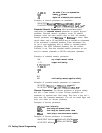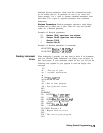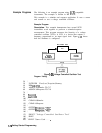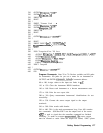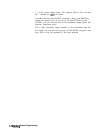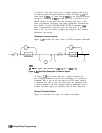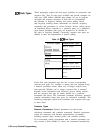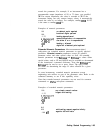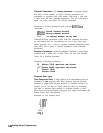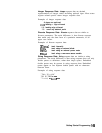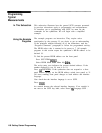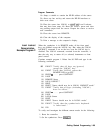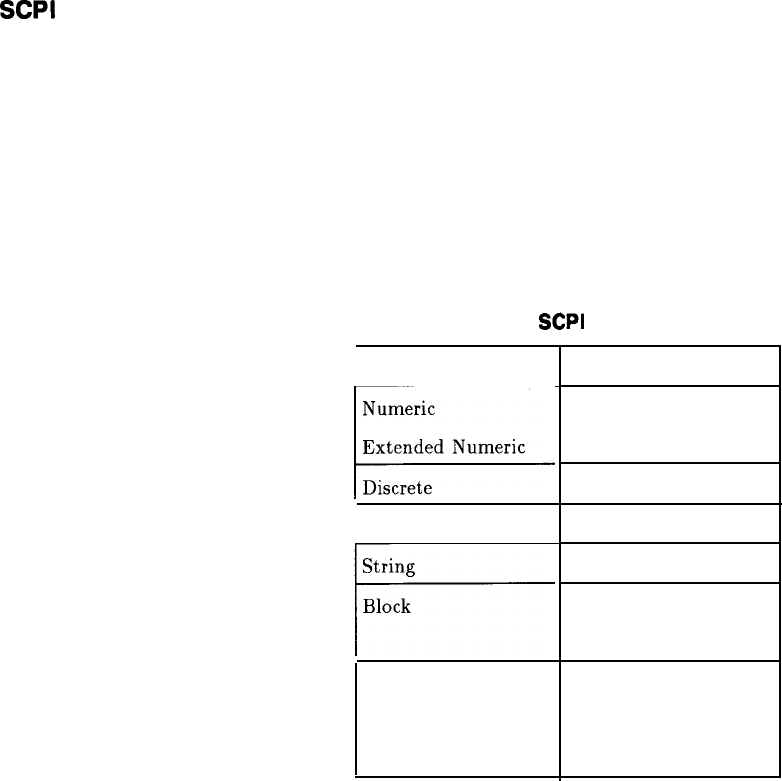
SCPI
Data Types
Table 1-3.
SCPI
Data Types
Parameter Types
Response Data Types
Numeric
c
Real or Integer
Extended Numeric Integer
Discrete
Discrete
Boolean
Numeric Boolean
String
Definite Length Block
Indefinite Length Block
Non-decimal Numeric Hexadecimal
Octal
Binary
These paragraphs explain the data types available for parameters and
response data. They list the types available and present examples for
each type. SCPI defines different data formats for use in program
messages and response messages. It does this to accommodate
the principle of forgiving listening and precise talking. Recall
that forgiving listening means instruments are flexible, accepting
commands and parameters in various formats. Precise talking means
an instrument always responds to a particular query in a predefined,
rigid format. Parameter data types are designed to be flexible in
the spirit of forgiving listening. Conversely, response data types are
defined to meet the requirements of precise talking.
Notice that each parameter type has one or more corresponding
response data types. For example, a setting that you program using
a numeric parameter returns either real or integer response data
when queried. Whether real or integer response data is returned
depends on the instrument used. However, precise talking requires
that the response data type be clearly defined for a particular
instrument and query. The instrument command dictionary generally
contains information about data types for individual commands. The
following paragraphs explain each parameter and response data type
in more detail.
Parameter Types
Numeric Parameters. Numeric parameters are used in both
subsystem commands and common commands. Numeric parameters
accept all commonly used decimal representations of numbers
including optional signs, decimal points, and scientific notation.
If an instrument setting programmed with a numeric parameter can
only assume a finite number of values, the instrument automatically
1-82 Getting Started Programming



